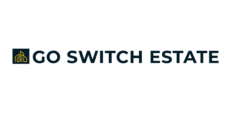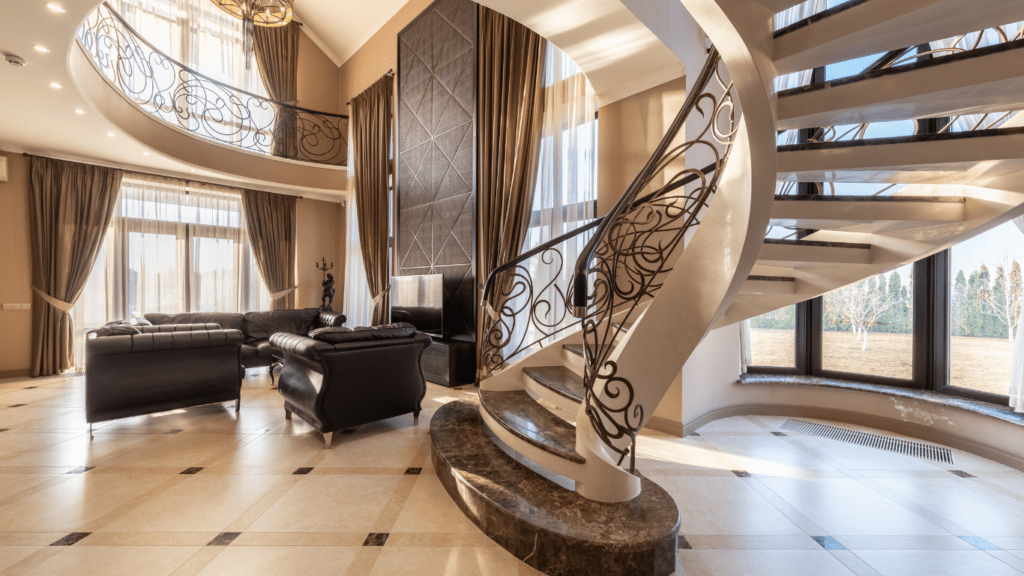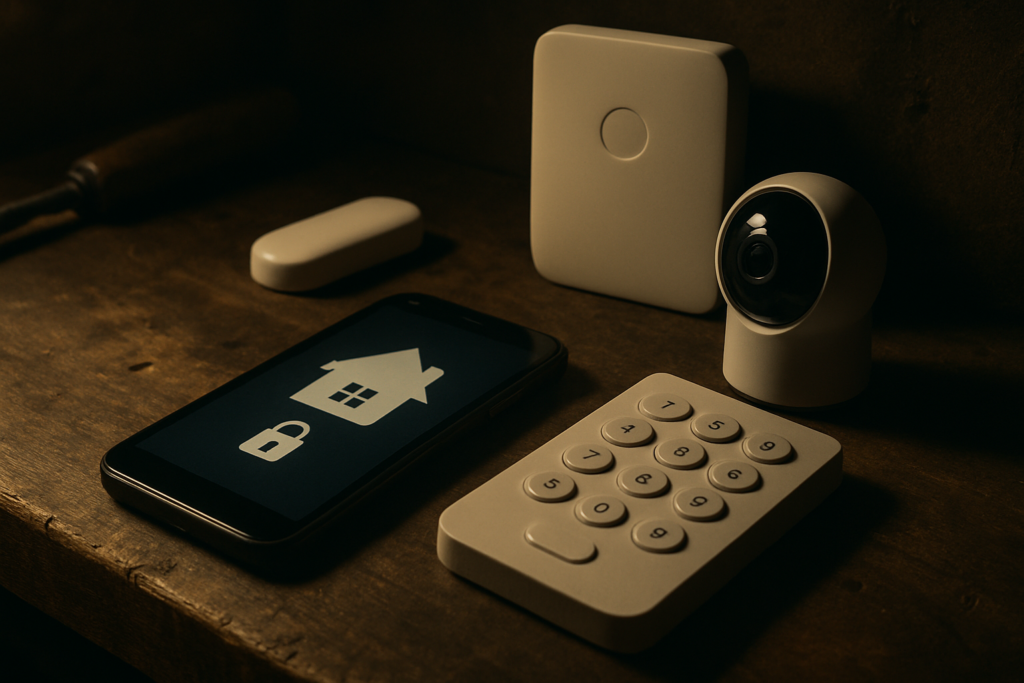In today’s fast-paced world, the integration of IoT (Internet of Things) technology has revolutionized the way we interact with our living spaces. As a homeowner myself, I’ve witnessed firsthand the profound impact IoT devices have had on modern housing, from smart thermostats that adjust temperatures automatically to security systems that can be monitored remotely.
These innovations not only enhance convenience but also improve energy efficiency and overall safety. With IoT becoming increasingly prevalent in households, the concept of smart homes is no longer a futuristic idea but a present-day reality.
As I delve into the topic of the impact of IoT on modern housing, I’ll explore how these interconnected devices are reshaping our daily routines, transforming the way we manage our homes, and ultimately creating a more streamlined and interconnected living environment for residents.
Evolution of Modern Housing
Exploring the evolution of modern housing in the age of IoT reveals a fascinating transition towards more intelligent and connected living spaces. As a homeowner, I’ve witnessed firsthand how IoT technology has revolutionized the way we interact with our homes.
From basic conveniences to advanced security features, the integration of smart devices has undeniably transformed traditional dwellings into futuristic, efficient habitats. The evolution of modern housing can be traced back to the early days of basic home automation, where simple tasks like remotely controlling lights or adjusting the thermostat were groundbreaking concepts.
Fast forward to the present day, and we find ourselves amidst a landscape where IoT has seamlessly integrated into every aspect of our daily lives. Smart thermostats regulate temperatures, smart locks enhance security, and smart appliances automate chores, all with the aim of making our lives easier and more sustainable.
This interconnected ecosystem of IoT devices has not only streamlined daily routines but has also paved the way for more energy-efficient and environmentally conscious living. By optimizing resource consumption and reducing waste, smart homes are playing a vital role in shaping a sustainable future.
The evolution of modern housing is not just about technological advancements but also about redefining our relationship with the spaces we inhabit, fostering a more harmonious coexistence with the environment. In this new era of smart living, the evolution of modern housing continues to unfold, offering endless possibilities for enhancing comfort, security, and efficiency in our living spaces.
As IoT technology advances and becomes more ingrained in our homes, the concept of modern housing will continue to evolve, creating a dynamic and adaptive environment that prioritizes the well-being and convenience of its inhabitants.
Integration of IoT in Housing
As a homeowner, the integration of IoT in housing has revolutionized the way I interact with my living space. Smart home automation, security enhancements, and energy efficiency are key areas where IoT technology has made a profound impact.
Smart Home Automation
Incorporating IoT devices for smart home automation has significantly improved the convenience and functionality of my household. From controlling lighting, heating, and entertainment systems to automating daily tasks, IoT technology has streamlined my routines and made my home more efficient.
Security Enhancements
Enhancing home security with IoT solutions has been a game-changer in safeguarding my property and providing peace of mind. With smart security cameras, door locks, and motion sensors, I can monitor my home remotely and receive instant alerts about any suspicious activity, bolstering the safety of my living environment.
Energy Efficiency
IoT technologies have also played a crucial role in promoting energy efficiency in my home. Smart thermostats, lighting systems, and appliances enable me to optimize energy usage, reduce waste, and lower utility costs.
By leveraging IoT for energy management, I have created a more sustainable and eco-friendly living space.
Improving Quality of Life
Exploring the impact of IoT on modern housing reveals a significant enhancement in the quality of life. By incorporating IoT devices in my home, I’ve experienced a notable improvement in various aspects that contribute to a more comfortable and efficient living environment.
- Enhanced Convenience: With IoT devices like smart thermostats and lighting systems, daily tasks are simplified. Adjusting room temperatures or turning off lights remotely not only saves time but also adds a layer of convenience to everyday living.
- Improved Security: IoT-enabled security systems offer a heightened sense of protection. Features such as smart cameras and motion sensors provide real-time monitoring and instant alerts, ensuring peace of mind and enhancing the overall safety within the home.
- Energy Efficiency: Smart devices play a crucial role in optimizing energy consumption. By monitoring and managing energy usage, IoT devices help reduce waste, leading to a more sustainable and eco-friendly living space.
The integration of IoT in modern housing goes beyond mere automation; it’s about creating a smarter, safer, and more energy-efficient living environment that ultimately enhances the quality of life for homeowners.
Challenges and Concerns
Reflecting on the integration of IoT in modern housing, I acknowledge that despite its numerous benefits, there are notable challenges and concerns that arise with this advanced technology. As a homeowner embracing smart devices, I have encountered certain issues that warrant attention to ensure a seamless experience in this connected environment.
- Privacy and Data Security Risks: One prominent concern associated with IoT in housing is the potential compromise of privacy and data security. With interconnected devices collecting and transmitting data, there is an inherent risk of unauthorized access or breaches, raising questions about the safety of personal information within the smart home ecosystem.
- Interoperability and Compatibility: Another challenge lies in the interoperability of diverse IoT devices from different manufacturers. Ensuring that these devices can communicate effectively with each other and integrate seamlessly into a unified system can be a complex task, requiring compatible standards and protocols.
- Reliability and Connectivity Issues: The reliability of IoT devices and the stability of connectivity networks are crucial factors influencing the smooth operation of smart homes. Network outages, device malfunctions, or compatibility glitches can disrupt daily routines and compromise the dependability of these interconnected systems.
- Complexity in Setup and Maintenance: Setting up and maintaining an IoT infrastructure in housing can be daunting for homeowners, especially those who are not tech-savvy. The complexity of installations, configurations, and troubleshooting procedures may pose challenges and require additional support or expertise.
- Cost and Affordability: While IoT technology offers various benefits, the initial investment and ongoing costs associated with purchasing and maintaining smart devices can be a barrier for some homeowners. Balancing the advantages of IoT with the financial implications is a consideration that needs to be addressed.
Understanding these challenges and concerns surrounding the integration of IoT in modern housing is essential for homeowners looking to embrace smart technologies effectively. By addressing these issues through proper safeguards, awareness, and proactive measures, the potential of IoT to enhance convenience, efficiency, and safety in homes can be maximized while mitigating risks and ensuring a secure and optimized living environment.





